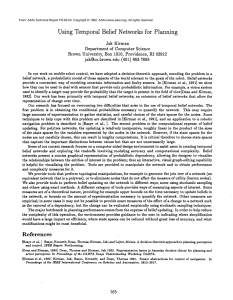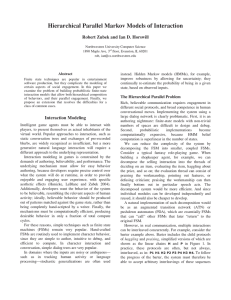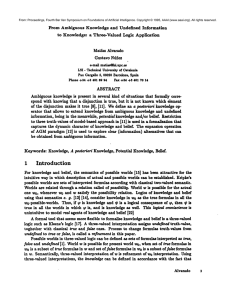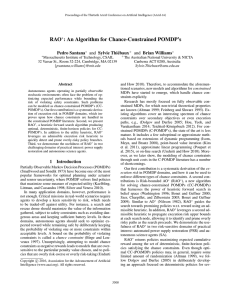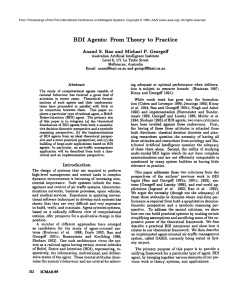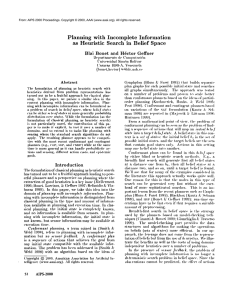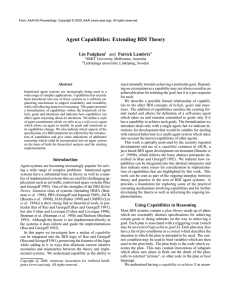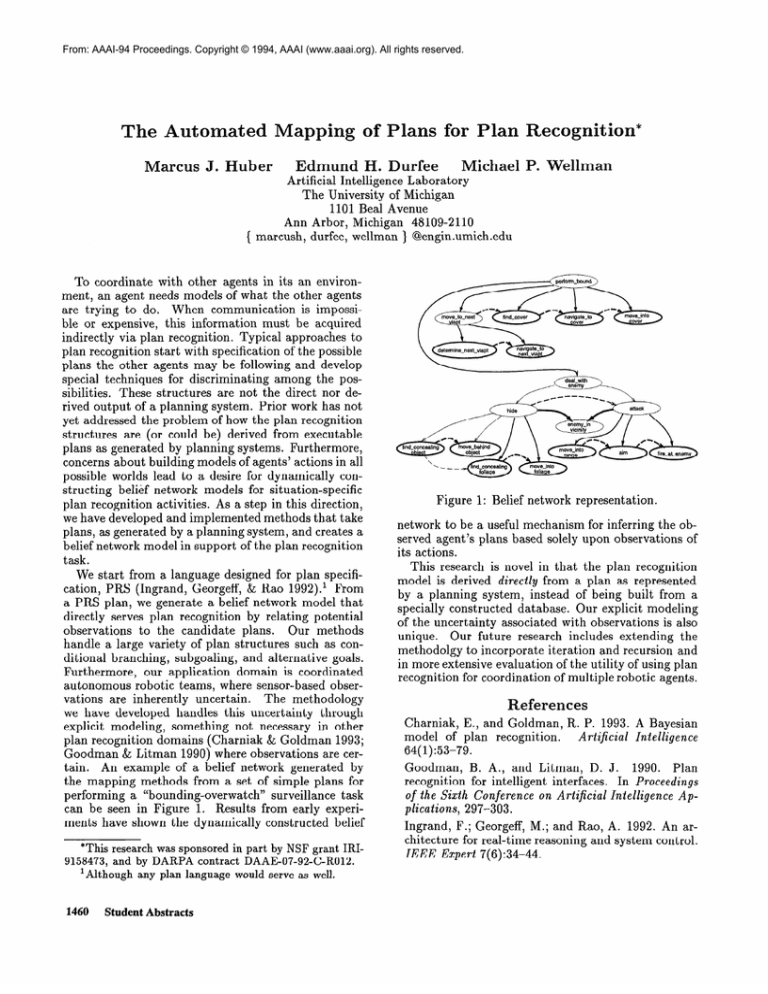
From: AAAI-94 Proceedings. Copyright © 1994, AAAI (www.aaai.org). All rights reserved.
The Automated
Marcus
J. Huber
Mapping of Plans for Plan Recognition*
Edmund
H. Durfee
Michael
P. Wellman
Artificial Intelligence Laboratory
The University of Michigan
110 1 Beal Avenue
Ann Arbor, Michigan
48109-2110
{ marcush, durfee, wellman ) @engin.umich.edu
To coordinate
with other agents in its an environment, an agent needs models of what the other agents
is impossiare trying to do. When communication
this information
must be acquired
ble or expensive,
indirectly via plan recognition.
Typical approaches to
plan recognition start with specification of the possible
plans the other agents may be following and develop
special techniques for discriminating
among the possibilities.
These structures
are not the direct nor derived output of a planning system. Prior work has not
yet addressed the problem of how the plan recognition
structures
are (or could be) derived from executable
plans as generated by planning systems. Furthermore,
concerns about building models of agents’ actions in all
possible worlds lead to a desire for dynamically
constructing
belief network models for situation-specific
plan recognition activities.
As a step in this direction,
we have developed and implemented methods that take
plans, as generated by a planning system, and creates a
belief network model in support of the plan recognition
task.
We start from a language designed for plan specification, PRS (Ingrand, Georgeff, & Rao 1992).l
From
a PRS plan, we generate a belief network model that
directly serves plan recognition
by relating potential
Our methods
observations
to the candidate
plans.
handle a large variety of plan structures such as conditional branching,
subgoaling,
and alternative
goals.
Furthermore,
our application
domain is coordinated
autonomous
robotic teams, where sensor-based
obserThe methodology
vations are inherently
uncertain.
we have developed handles this uncertainty
through
explicit modeling,
something
not necessary in other
plan recognition domains (Charniak & Goldman 1993;
Goodman & Litman 1990) where observations
are certain.
An example of a belief network generated
by
the mapping methods from a set of simple plans for
surveillance
task
performing
a “bounding-overwatch”
can be seen in Figure 1. Results from early experiments have shown the dynamically
constructed
belief
*This research was sponsored in part by NSF grant IRI9158473, and by DARPA
contract
DAAE-07-9%C-R012.
‘Although
any plan language would serve as well.
1460
Student Abstracts
Figure
1: Belief network
representation.
network to be a useful mechanism for inferring the observed agent’s plans based solely upon observations
of
its actions.
This research is novel in that the plan recognition
model is derived directly from a plan as represented
by a planning system, instead of being built from a
specially constructed
database.
Our explicit modeling
of the uncertainty
associated with observations
is also
unique.
Our future research includes extending
the
methodolgy to incorporate
iteration and recursion and
in more extensive evaluation of the utility of using plan
recognition for coordination
of multiple robotic agents.
References
Charniak,
E., and Goldman,
model of plan recognition.
64(1):53-79.
R. P. 1993.
Artificial
A Bayesian
Intelligence
Goodman,
B. A., and Litman,
D. J.
1990.
Plan
recognition
for intelligent interfaces.
In Proceedings
of the Sixth Conference
on Artificial Intelligence
Applications, 297-303.
Ingrand, F.; Georgeff, M.; and Rao, A. 1992. An architecture for real-time reasoning and system control.
IEEE Expert 7(6):34-44.





